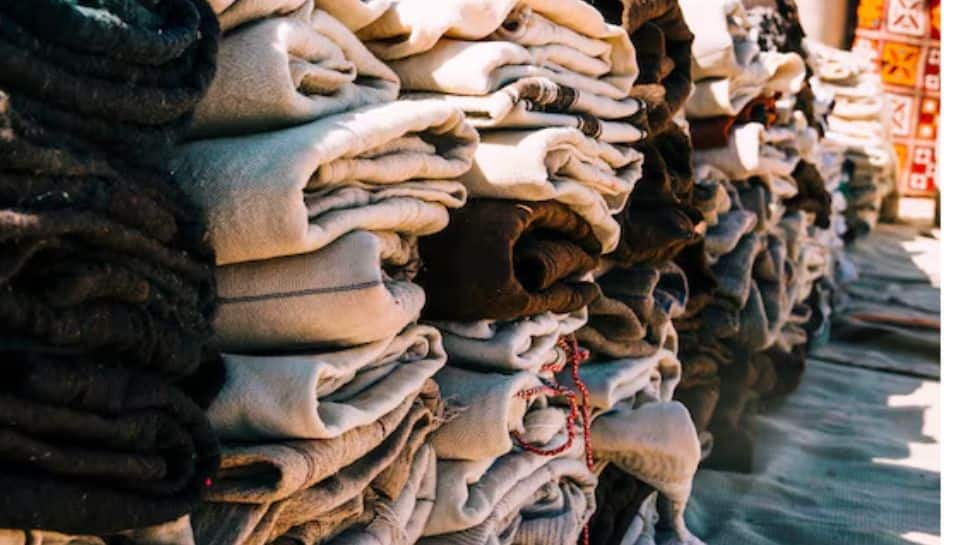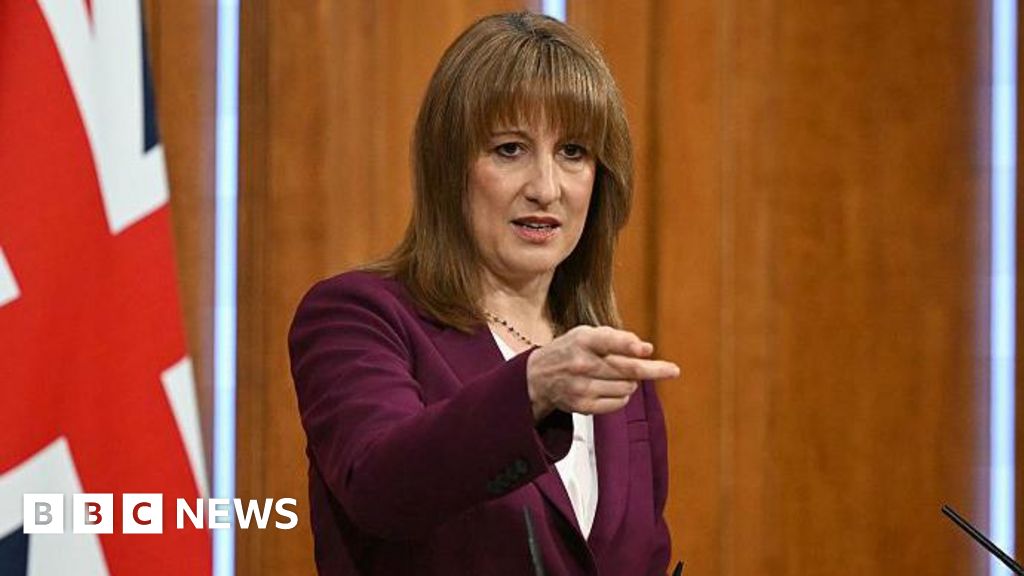Business
Shares of Swiss sneaker company On soar 20% as it raises guidance again

Logo of Swiss shoemaker On is displayed in a shop in Zurich, Switzerland, Aug. 28, 2025.
Denis Balibouse | Reuters
On raised its full-year guidance for the third quarter in a row on Wednesday after the Swiss sportswear company posted another three months of double-digit growth, bucking a slowdown in the sneaker market.
The company, known for its innovative approach to running shoes, is now expecting 2025 sales to reach 2.98 billion Swiss francs ($3.72 billion), up from its previous guidance of 2.91 billion francs, on a reported basis. On a constant currency basis, the company anticipates sales will grow 34% from the prior year, rising from its previous forecast of 31%.
The forecast is slightly above the 2.97 billion francs analysts were expecting, according to LSEG.
“Our focus on premium, on full-price sales, on innovation, on that intersection between performance and design is just resonating very strongly with the consumer, and it’s really setting ourselves apart,” CEO Martin Hoffmann told CNBC in an interview. “You see it in the results. We have strong top-line growth, we have a strong margin, so that shows that we stay fully committed to full-price sales, and this is across all our channels.”
Shares of On jumped more than 20% in morning trading Wednesday in New York.
During its 2025 third quarter, the sportswear company beat Wall Street’s expectations on the top and bottom lines.
Here’s how On performed compared with what Wall Street was anticipating, based on a survey of analysts by LSEG:
- Earnings per share: 47 cents in francs adjusted vs. 25 cents expected
- Revenue: 794 million francs vs. 763 million francs expected
The company’s reported net income for the three-month period that ended Sept. 30 was 118.9 million francs, or 36 cents per share, compared with 30.5 million francs, or 9 cents per share, a year earlier.
Excluding one-time items, On posted earnings of 43 cents per share.
Sales rose to 794.4 million francs, up about 25% from roughly 636 million francs a year earlier.
On’s rosy results come as competitors like Nike and Hoka plan for either a sales decline or slowdown in growth, as discretionary spending stagnates and tariffs take a bite out of shoppers’ wallets. In late September, Nike said it was expecting sales in its current quarter, which runs generally from early September to early December, to fall by a low single-digit percentage as it works to reignite innovation and streamline operations. Deckers, the parent company behind On’s fellow buzzy footwear brand Hoka, trimmed its sales guidance for Hoka in October.
Meanwhile, On is raising its sales guidance as it gears up for the holiday shopping season. Retail analysts expect most of the industry to lean heavily on discounts and promotions to drum up demand during the critical holiday shopping season, but On won’t even be offering a Black Friday discount, said co-founder and Executive co-Chairman Caspar Coppetti.
On will be “full price through the holiday season,” Coppetti said in an interview with CNBC. “This is against the backdrop of a very competitive and very discount-driven environment currently, and so this leveling up that we’ve done, and then just being able to command a much higher selling price, really sets On apart.”
While On is typically sold alongside brands like Nike, Hoka and Brooks Running, its holiday strategy is similar to those of luxury names. It’s part of the company’s strategy to be the most premium sportswear brand on the market by not just offering the highest prices but also the most innovative products across footwear and apparel.
Still far smaller than many of the legacy brands it competes with, On has slowly been chipping away at their market share primarily through innovation, where industry leader Nike has been criticized for falling behind.
Last year, On launched its Cloudboom Strike LS produced with its “LightSpray” technology, which makes performance running shoes using a spray gun in a matter of minutes. Runner Hellen Obiri was wearing the shoes when she broke the women’s record in the New York City Marathon by almost three minutes earlier this month.
“That’s a very strong validation,” said Coppetti. “Runners really do pay attention to what people are wearing now when they’re in a race, because these innovations trickle down and they inform their choices.”
Business
Heineken cuts strength of Foster’s lager as duty rises and sales slump

Heineken UK is cutting the strength of its Foster’s lager to take advantage of duty savings on weaker beers.
The brewer said dropping the lager’s strength from 3.7% to 3.4% would allow customers to “benefit from more competitive pricing as inflationary pressures continue to affect the wider market”.
It added: “This follows the introduction of differential duty rates by the UK government, which encourage brewers to innovate at lower ABV (alcohol by volume) rates in support of customers wanting to moderate their alcohol consumption.”
The change, which takes effect from February, would also support pubs and retailers with a “competitively priced classic lager”, it said.
Foster’s ABV was previously lowered from 4% to 3.7% in January 2023.
Heineken UK said: “The decision to adjust the ABV of Foster’s reflects our commitment to helping consumers make responsible choices, while supporting pubs and retailers with a competitively priced classic lager alongside a portfolio of brands across the price and ABV spectrum.
“Our master brewers have spent many months refining the recipe to ensure the taste remains unmistakably Foster’s – crisp, balanced, and refreshing.”
Off-trade sales of Foster’s fell by 13.7% to £252.8 million in the year to April, according to NIQ data.
A number of products have been reformulated since the introduction of new duty savings on beers with an ABV of 3.4% or below in August 2023, including Carlsberg Pilsner, Coors Light and Grolsch.
Business
9 Money Mistakes That Drain Your Wealth

Overspending: If you spend more than you earn it leads to debt accumulation and constant financial stress. Budgeting and tracking expenses are key to staying in control. (Image: AI Generated)

Neglecting Emergency Savings: Without an emergency fund, unexpected expenses can force you into high-interest debt. Aim to save 3–6 months of living expenses. (Image: AI Generated)

Accumulating High-Interest Debts: Credit card balances and payday loans grow rapidly due to high interest rates. Always pay off high-interest debts first to prevent wealth erosion. (Image: AI Generated)

Ignoring Retirement Planning: Delaying retirement contributions reduces the power of compound interest. Start early and contribute consistently to secure your future. (Image: AI Generated)

Impulse Spending: Emotional purchases and impulsive buying can add up quickly. Pause before every major purchase and ask if it aligns with your financial goals. (Image: AI Generated)

Failing To Invest: Keeping money idle in low-interest accounts limits growth. Smart investments in stocks, bonds, or mutual funds helps your wealth compound over time. (Image: AI Generated)

Lack Of Financial Education: Ignorance about taxes, investments, and budgeting can cost you significantly. Continuously educate yourself to make informed decisions. (Image: AI Generated)

Avoiding Insurance: Skipping health, life, or property insurance exposes you to financial risk. Adequate coverage protects your assets and prevents unexpected losses. (Image: AI Generated)

Chasing Short-Term Gains: Always focus on long-term strategies that build sustainable wealth. (Image: AI Generated)
Business
India’s Textile Exports Record Growth In 111 Countries

New Delhi: India’s global exports of textiles, apparel and made-ups grew by 0.1 per cent during April–September 2025, compared to the corresponding period in 2024, the government data showed on Wednesday.
The textile and apparel sector, including handicrafts exports, demonstrated remarkable resilience in the first half of FY 2025-26 despite global headwinds and tariff-related challenges in major markets.
Some of the large export markets for India which clocked impressive growth rates were the UAE (14.5 per cent), the UK (1.5 per cent), Japan (19.0 per cent), Germany (2.9 per cent), Spain (9.0 per cent) and France (9.2 per cent).
On the other hand, some of the other markets that recorded higher growth rates were Egypt (27 per cent), Saudi Arabia (12.5 per cent), Hong Kong (69 per cent), etc.
These 111 markets contributed $8,489.08 million during April–September 2025, compared to $7,718.55 million in the previous year — reflecting a 10 per cent growth and an absolute increase of $770.3 million. The key sectors driving this growth included ready-made garments (RMG) of all textiles (3.42 per cent growth) and Jute (5.56 per cent growth).
The ministry said that this performance highlights the sector’s adaptability and competitiveness in the face of global uncertainties. India’s continued expansion into non-traditional markets reinforces the Government’s policy focus on export diversification, value addition, and global market integration under the “Make in India” and “Aatmanirbhar Bharat” initiatives.
Meanwhile, the GST 2.0 rate cuts on several handicraft items from 12 per cent to 5 per cent have come as a major boon for the country’s artisans, as demand for their products has gone up, leading to higher earnings and also enabling them to compete with factory-made goods.
The tax cuts have benefited artisans producing items like wood-carved products, terracotta jute handbags, textile items, and leather goods. By lightening the tax load, the reforms will help build stronger markets for traditional handlooms and crafts.
-

 Business1 week ago
Business1 week agoFirst new Amazon electric heavy goods vehicles hit UK roads
-

 Sports1 week ago
Sports1 week agoShaheen Afridi Eyes First ODI Series Win as Pakistan Captain – SUCH TV
-

 Tech1 week ago
Tech1 week agoThe Security Interviews: Colin Mahony, CEO, Recorded Future | Computer Weekly
-

 Fashion1 week ago
Fashion1 week agoGermany’s Adidas achieves highest-ever quarterly sales in Q3 2025
-

 Tech1 week ago
Tech1 week agoNokia, Rohde & Schwarz collaborate on AI-powered 6G receiver | Computer Weekly
-

 Tech1 week ago
Tech1 week agoOur Favorite Gaming Headset for Xbox Owners Is Discounted
-

 Business1 week ago
Business1 week agoReeves lays ground for painful Budget, but will it be worth it?
-

 Business1 week ago
Business1 week agoSetback for expatriates? Delhi HC upholds mandatory EPFO membership; what this means for foreign staff – The Times of India











